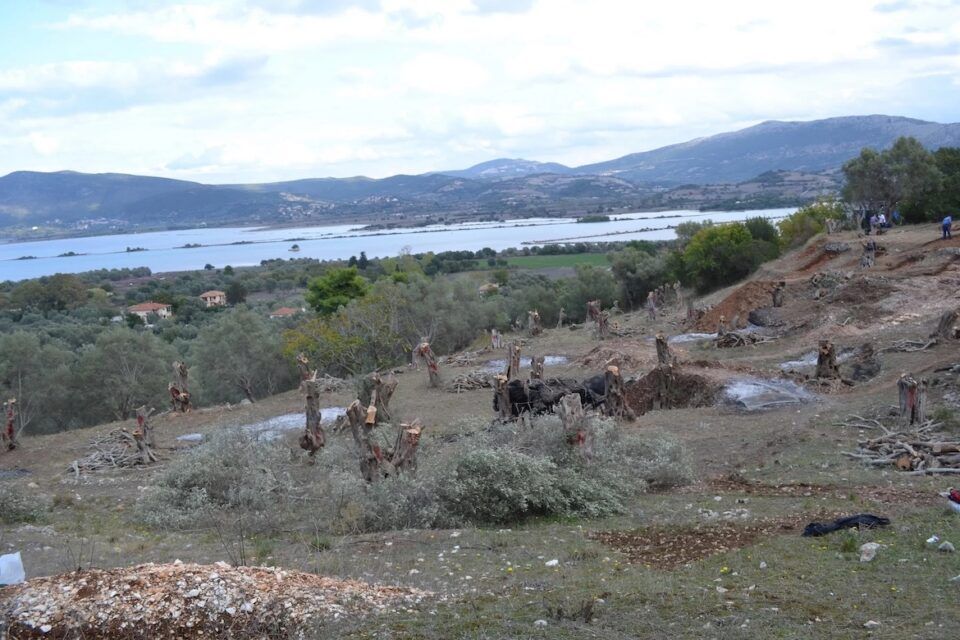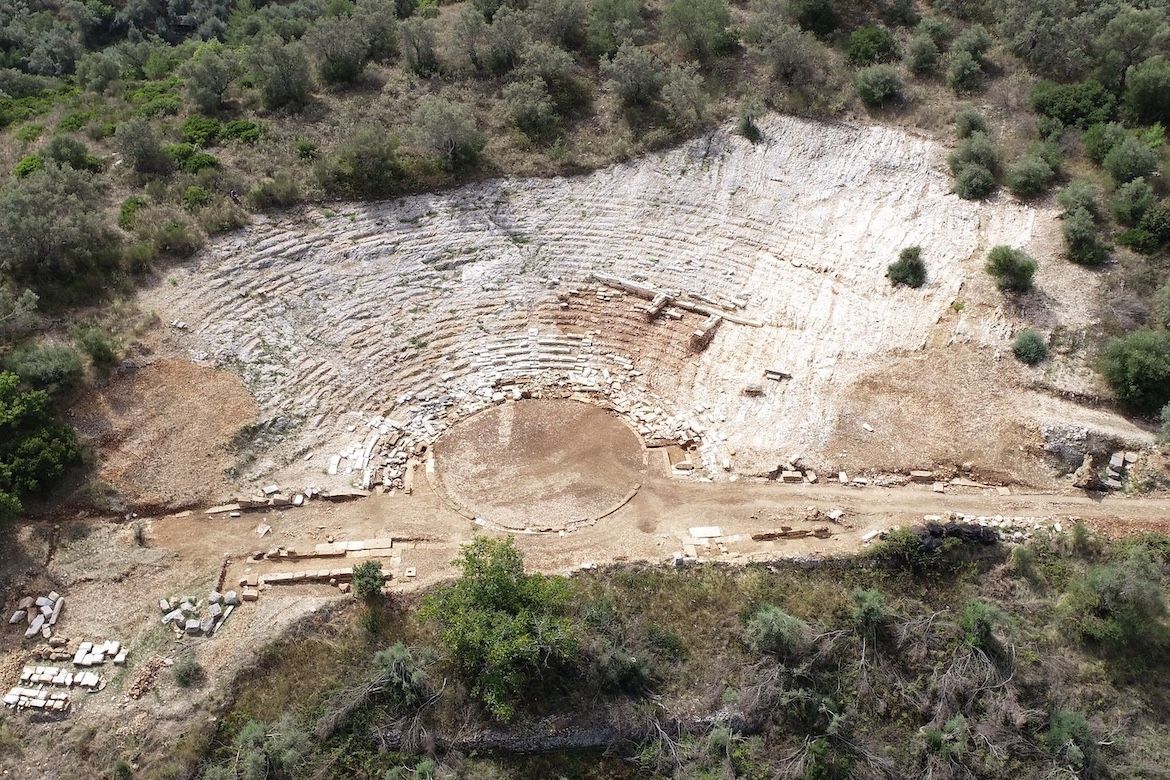More than a century after its initial discovery and thousands of years since its last curtain call, the only known amphitheater on Greece’s Ionian Islands is finally seeing the light of day.
Greek archeologists have been excavating at the site for a decade. Although much of the site hasn’t been well-preserved, the “cavea,” or semi-circular seating area appeared prominently after trees were cleared and extensive digging took place.
The researchers have also estimated that construction on the theater began around the 4th century BC, when ancient Lefkada was experiencing economic prosperity.
“Although damaged by time,” the researchers said in a press announcement, “the theater, fully and harmoniously integrated into the geomorphology of the hill, with a panoramic view of the wider area, is undoubtedly the most important and imposing monument that has come to light in ancient Lefkada.”
Ancient Lefkada was settled sometime before the 7th century BC by seafaring Corinthians. They established a foothold on the island for its strategic position along major sea routes, which fueled the flourishing of the city-state.
The area’s archaeological remains have surfaced the ancient city’s many public and private construction projects—from a port and a canal to residential areas and of course, the vast theater that overlooked the coast.
In 1901, the ruins of the theater were found by German archaeologist E. Kruger and later logged by his collaborator Wilhelm Dörpfeld in his 1927 volume Alt Ithaka. Following their survey, the Germans reburied the monument. Over the years, as the grounds grew over with olive groves, the location of the theater was lost.

It took decades before the structure was rediscovered in 1997 by archaeologists studying the the area. From 2015, a systemic excavation of the site commenced. Large olive trees had to be uprooted and extensive earthworks carried out in a project that archaeologists deemed “particularly difficult and demanding.”
So far, the project has unearthed the building’s cavea, orchestra pit, most of the stage, and various walls.
The cavea boasted 21 rows of seats, likely topped by a diazoma, or horizontal aisle, which led up to a further three rows. Two cavea walls were found standing at lengths from 65 to 91 feet. The theater, however, appears to have been unfinished. Still, the team calculates it could have seated about 3,500 spectators; if completed, estimates put its capacity at 10,000 to 11,000.
The orchestra pit, meanwhile, was discovered carved into natural rock in a perfect circle some 54 feet in diameter. A stone frame encircles it. Remains of the stage area were also discovered, including parts of sandstone columns and architraves. These fragments once formed part of the Ionic facade of the theater’s loggia, or external gallery, which once boasted 16 columns and was flanked by ramps.
A highlight during the dig, the team noted, was the unearthing of fragments of three stone thrones. These seats, once decorated with reliefs depicting dolphins, birds, and lion paws, were intended for prominent guests, whether priests or city officials.
Quite likely, the theater saw modifications during its lifetime before it was abandoned as Lefkada declined during the Roman era. In 31 BC, Roman emperor Augustus founded Nicopolis, a new capital city near Preveza, at which the majority of Lefkada residents were forced to settle. Ancient Lefkada was deserted, with many of its buildings, including the theater, being mined for construction material.














